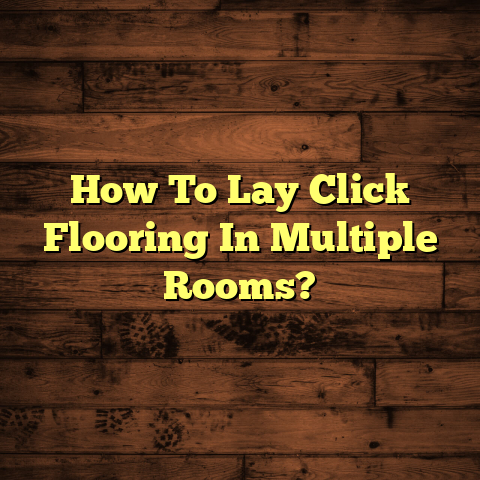Black Hardwood Floors in Living Rooms? [Stunning Ideas Inside]
When I think about living rooms with black hardwood floors, the hidden benefits they bring to the table are remarkable. Many people often overlook how these stunning floors can elevate a space beyond aesthetics. They provide a striking backdrop that enhances the overall design and ambience of the room, making it not only beautiful but also functional.
The Aesthetic Appeal of Black Hardwood Floors
Black hardwood floors are undeniably eye-catching. Their deep, rich color adds sophistication and elegance to any living room. I remember one particular project where a homeowner wanted to create a modern, chic space. After discussing various options, we decided on black hardwood flooring, and the transformation was nothing short of stunning.
The black floors created a bold statement that made the living room feel more inviting and stylish. They drew attention without overwhelming the space, serving as a perfect foundation for the rest of the decor. The contrast between the black floor and the lighter walls accentuated the overall aesthetic, creating a harmonious balance.
How Black Hardwood Floors Interact with Light
One of the hidden benefits of black hardwood is its interaction with light. In a well-lit room, these floors can reflect light in unique ways, creating a dynamic atmosphere. I’ve noticed that during different times of the day, the floors seem to change character based on the natural light streaming through the windows.
For instance, in a sunny afternoon, they can appear glossy and vibrant, while in the evening, they take on a warmer, cozier feel with softer lighting. This adaptability makes them an exciting choice for living rooms, where ambiance can shift dramatically.
When I worked on a project where large windows allowed ample natural light, it was fascinating to see how the floors transformed throughout the day. In the morning, they absorbed sunlight beautifully, making the room feel open and airy. By sunset, however, they reflected the warm tones of dusk, inviting a sense of calm and relaxation.
Choosing the Right Complementary Colors
Selecting complementary colors for walls and furniture is crucial when working with black hardwood floors. I’ve found that lighter shades for walls can create an eye-catching contrast. Soft whites, grays, or even pastel colors can make a stunning pairing with black floors.
For example, during one project, my client opted for a light gray paint for their living room walls. The combination with the black hardwood created a stunning visual balance that was both modern and inviting. We added some colorful artwork to further enhance the aesthetic, and I remember how excited my client was to see everything come together.
Incorporating decorative elements like throw pillows, curtains, and rugs in lighter tones can also help soften the dramatic effect of black floors without compromising style. One client chose a pale blue for her sofa and incorporated patterned cushions that added personality to the space without overshadowing the richness of the black flooring.
Textures and Patterns
Adding different textures and patterns can elevate the look of black hardwood floors significantly. I’ve found that incorporating rugs with intricate designs can soften the starkness of the floors and bring warmth to the space. A plush area rug can anchor furniture pieces and create a cozy atmosphere.
During one project in a modern loft with open spaces, we decided to use a textured cream-colored rug that had subtle patterns. It provided contrast against the dark floors while also offering comfort when walking barefoot.
Additionally, mixing materials like metal accents or wooden furniture can add depth to the design. For example, I had a project where we used gold light fixtures that contrasted beautifully with the black floors, providing an elegant touch. The interplay of metals and wood enhanced the overall design aesthetic.
Practical Considerations for Installation
Now let’s talk installation. When tackling black hardwood floors, ensuring everything is done right from the start is essential. I’ve learned through experience that proper acclimation of the flooring material is vital to prevent warping or buckling later on.
In one project, we faced some challenges during installation due to humidity levels in the home. We had to delay the installation by a few days to allow the wood to acclimate properly before laying it down. It was a setback at first, but it taught me patience is crucial in flooring projects.
Another consideration during installation is ensuring that subflooring is adequately prepared. Black hardwood has a tendency to show imperfections more readily than lighter woods, so having a smooth subfloor is essential for achieving a flawless finish.
Cost Estimation Made Simple with FloorTally
When estimating costs for installing black hardwood floors, I rely heavily on FloorTally. This tool has streamlined my workflow significantly over time. It pulls local material and labor rates into one platform, which means I can generate accurate estimates in no time.
For example, when working on that chic living room project I mentioned earlier, I quickly inputted all necessary details about floor area and material choices into FloorTally. It provided me with an accurate budget that took into account both labor and materials. This transparency helped me build trust with my clients right from the start.
Using FloorTally also allows me to compare different materials easily. When my clients express interest in alternatives like laminate or engineered wood with similar aesthetics as black hardwood, I quickly demonstrate cost differences using this software. It empowers my clients to make informed decisions without feeling overwhelmed by numbers.
Maintenance Tips for Longevity
Maintaining black hardwood floors can be tricky but manageable with some care. I recommend regular sweeping or vacuuming to remove dust and debris. Unlike lighter woods that might hide dust better, black floors reveal every speck of dirt.
Additionally, using a damp mop with a gentle cleaner specifically designed for hardwood can help keep them looking pristine. I once had a client who neglected cleaning their black floors regularly; over time, it became evident with scratches and dull spots appearing.
After we cleaned and polished them, they looked brand new again! Regular maintenance is key to preserving their beauty. Encouraging clients to adopt simple habits like removing shoes before entering can vastly improve their durability.
Overcoming Challenges
Like any flooring project, working with black hardwood floors comes with its challenges. One issue I’ve encountered is how easily they can show dust or scratches compared to lighter-colored options. However, I remind my clients that this is just part of their charm.
To mitigate this issue, I often recommend using felt pads under furniture legs to prevent scratches. Also, encouraging clients to adopt a “no shoes” policy can significantly reduce wear and tear on their beautiful floors.
I recall one project where my client hosted frequent gatherings. We discussed strategies to minimize scuff marks from guests’ shoes—advice that made their lives easier while keeping their floors looking sharp.
Exploring Different Finishes
When choosing finishes for black hardwood, several options are available that can impact both aesthetics and durability. Matte finishes tend to hide scratches better but may require more frequent cleaning compared to glossy finishes that can enhance color but may show imperfections more readily.
I had a client who opted for a satin finish on their black hardwood floors. It struck the perfect balance between durability and aesthetics. The result was a stunning sheen that elevated their living room without being overly shiny or difficult to maintain.
During another project, my client chose a matte finish because they preferred less maintenance while enjoying their family activities without worrying about scratches showing too prominently. It’s all about understanding your clients’ needs and finding solutions that work best for them.
Personalizing Your Space
Black hardwood floors provide an excellent backdrop for personal touches in your living room design. I encourage clients to incorporate pieces that reflect their personality—whether through artwork, decorative pillows, or unique furniture.
For instance, I once worked with a couple who loved vintage finds. They paired their black floors with mid-century modern furniture and eclectic art pieces, creating a warm atmosphere that truly felt like home.
One memorable detail was when they displayed an antique bookshelf filled with colorful books against an accent wall painted in soft teal. The contrast of colors against black flooring brought life into the space while maintaining an air of sophistication.
Incorporating Technology
In today’s world, incorporating technology into living room designs is becoming increasingly popular. Smart home systems allow homeowners to control lighting and temperature remotely.
When designing spaces with black hardwood floors, consider integrating smart lighting systems that allow you to adjust brightness levels according to mood or time of day. For example, dimmable lights can enhance the luxurious feel of black floors during evening gatherings.
In one project with high ceilings and expansive windows allowing ample natural light during the day but needing softer illumination at night, we installed smart dimmers paired with warm LED lights—a perfect complement to their stunning black hardwood floors.
Creating Zones in Open Spaces
With many modern homes embracing open floor plans, defining zones within these spaces becomes essential for functionality and aesthetics. Black hardwood provides an excellent base for creating distinct areas within your living room.
For example, I’ve worked on projects where we defined seating areas using area rugs placed strategically over black flooring—this helps delineate conversational spots while adding texture without overpowering other design elements.
Additionally, different furniture arrangements can emphasize various zones within one space—like having accents such as tall plants or bookcases separating areas for relaxation versus entertainment while still harmonizing on those striking dark floors.
Balancing Formality and Comfort
When designing living rooms with black hardwood flooring, balancing formal elegance with casual comfort is vital for creating inviting spaces that cater to different needs—especially in homes where families gather often.
To achieve this balance effectively:
- Choose furniture styles that blend comfort (like plush sofas) alongside chic designs (like sleek coffee tables).
- Incorporate elements such as cozy blankets draped over seating or inviting throws across chairs.
I often remind clients that living rooms should feel welcoming while still reflecting personal style—a blend capable of accommodating both intimate family evenings or formal gatherings seamlessly!
Sustainable Options for Black Flooring
In recent years there has been more emphasis on sustainability within home design—including flooring choices! As homeowners become increasingly aware of environmental impacts from manufacturing processes they look toward eco-friendly alternatives when considering installations like black hardwoods.
Engineered wood offers sustainable benefits by utilizing less valuable timber while maintaining beautiful aesthetics similar to solid options—making it an attractive choice if sustainability aligns with your values!
I once worked on an eco-conscious project where we sourced reclaimed wood specifically dyed deep shades of ebony for flooring; it provided both character & history while ensuring minimal impact on forests—a win-win scenario!
Comparative Analysis: Solid vs. Engineered Black Hardwood
When considering black hardwood flooring options—homeowners typically face decisions between solid vs engineered products each having its pros & cons based largely around durability & installation ease.
Solid Black Hardwood:
- Pros: Long-lasting; refinishing possible multiple times; classic appeal.
- Cons: Prone to expansion/contraction issues due to humidity; may require more extensive maintenance over time; higher cost upfront.
Engineered Black Hardwood:
- Pros: More stable under varying environmental conditions; cost-effective; easier installation.
- Cons: Limited refinishing potential (typically once); may lack authenticity compared to solid options.
I often guide clients through this decision-making process by sharing my experiences working with both types; understanding their lifestyle needs helps determine which option suits them best!
Final Thoughts and Encouragement
As I reflect on my journey as a flooring contractor specializing in designs featuring black hardwood floors—I’m reminded of how versatile these materials truly are! Their ability not only enhances aesthetics but provides functional benefits across various living spaces makes them an exceptional choice worth considering!
Remember that designing your living room should be fun! Embrace creativity & express yourself through every detail—from color palettes down selection patterns/textures—allow your personality shine through!
So if you’re contemplating installing black hardwood flooring in your living room—think about how it can transform your space into something extraordinary while balancing style with practical considerations like maintenance & care needs down road!
With patience & creativity—you’ll discover these gorgeous dark-hued beauties aren’t just beautiful—they’re an investment into future aesthetic value enriching your home’s character over time!

![Tile Floor Hairspray Buildup? [Quick Fix Guide]](https://floortally.com/wp-content/uploads/2025/01/How-To-Remove-Hairspray-Buildup-On-Tile-Floor.png)
![Accident on Store Floor: Quick Cleanup Guide [Flooring Savior]](https://floortally.com/wp-content/uploads/2025/01/Poop-On-Store-Floor-Tips-For-Cleanup.png)

![How Thick Should Your Concrete Basement Floor Be? [Don't Overpay]](https://floortally.com/wp-content/uploads/2025/01/How-Thick-Should-A-Concrete-Basement-Floor-Be.png)

